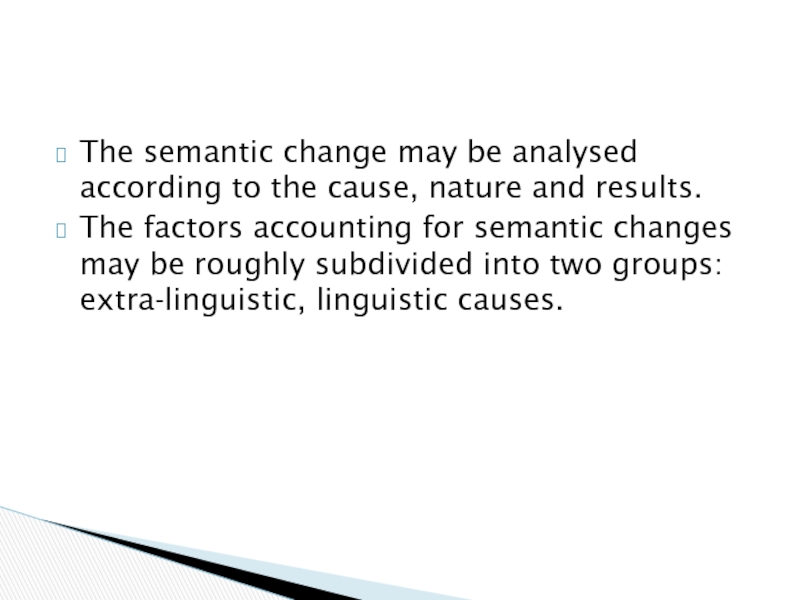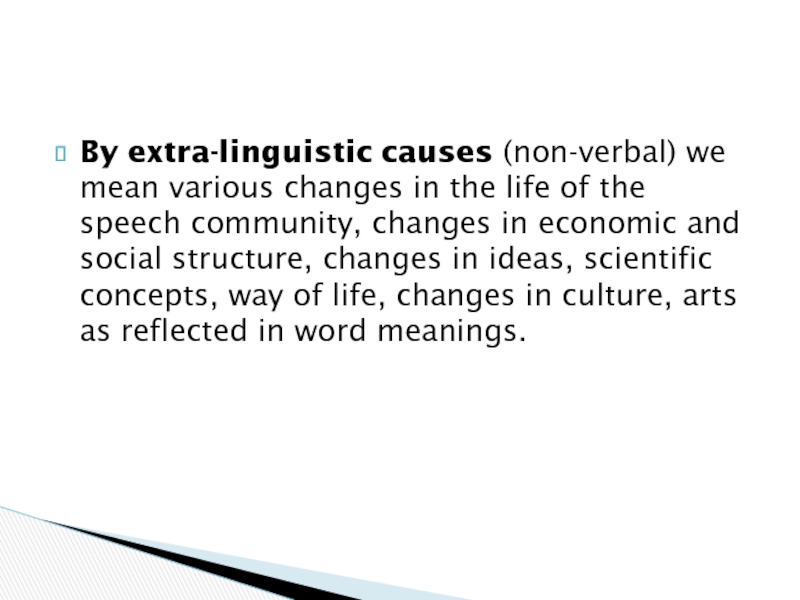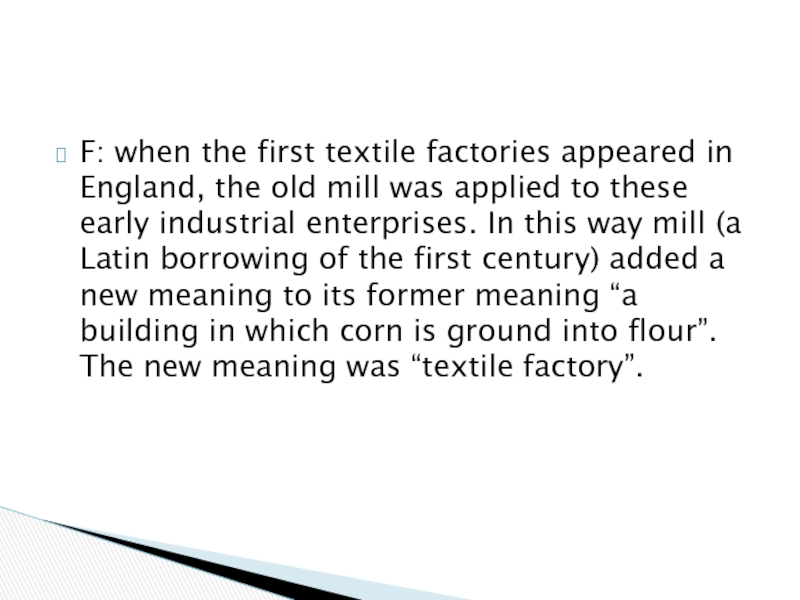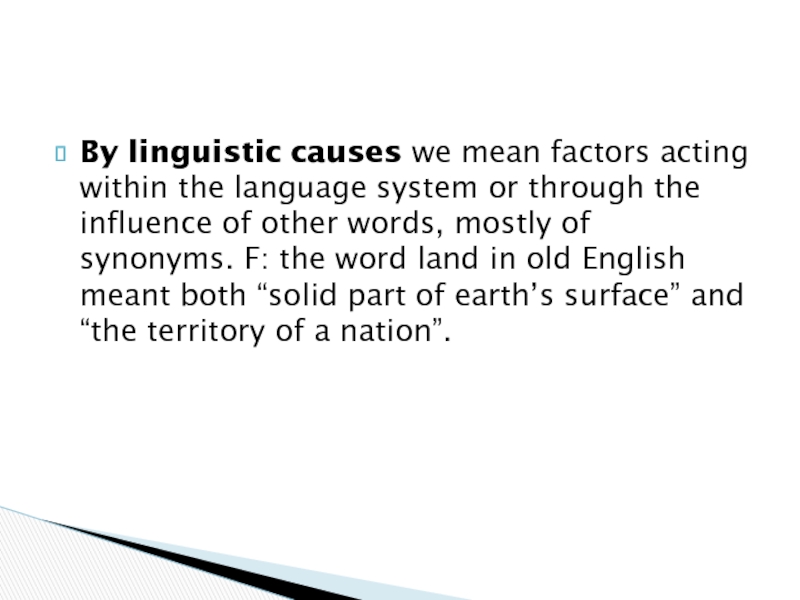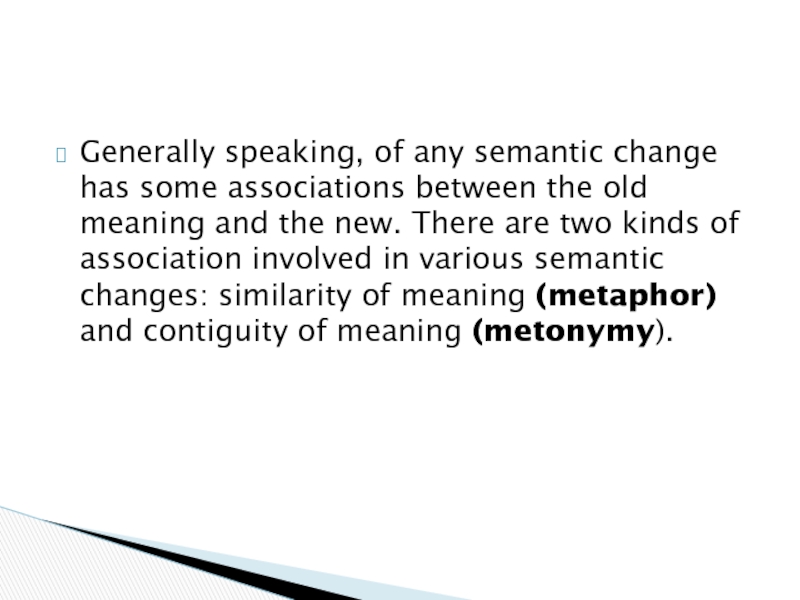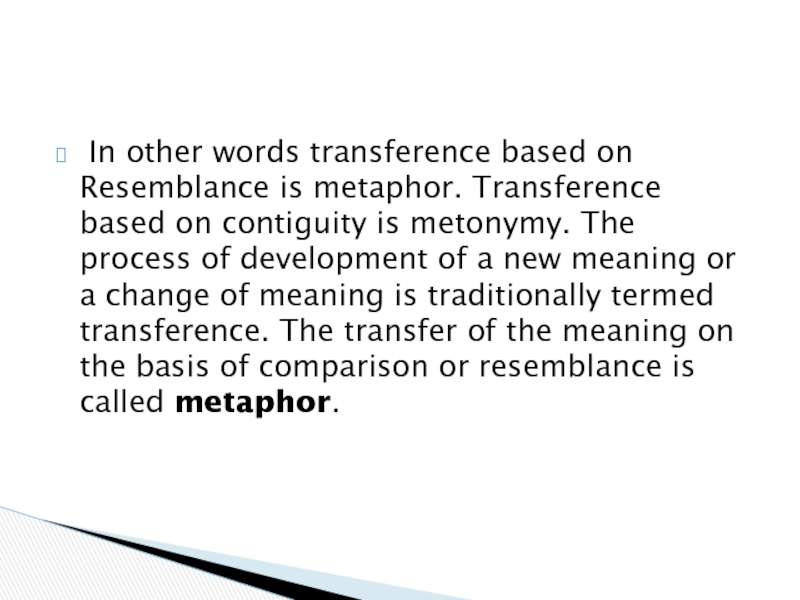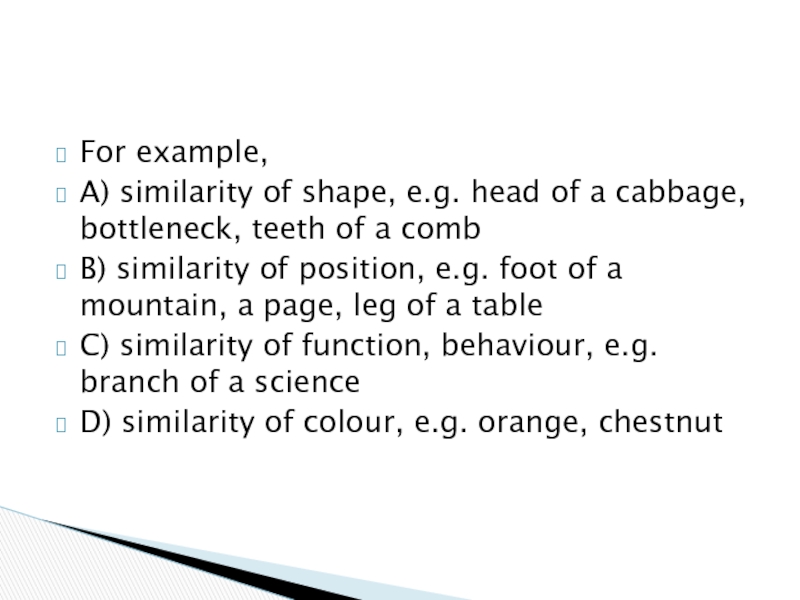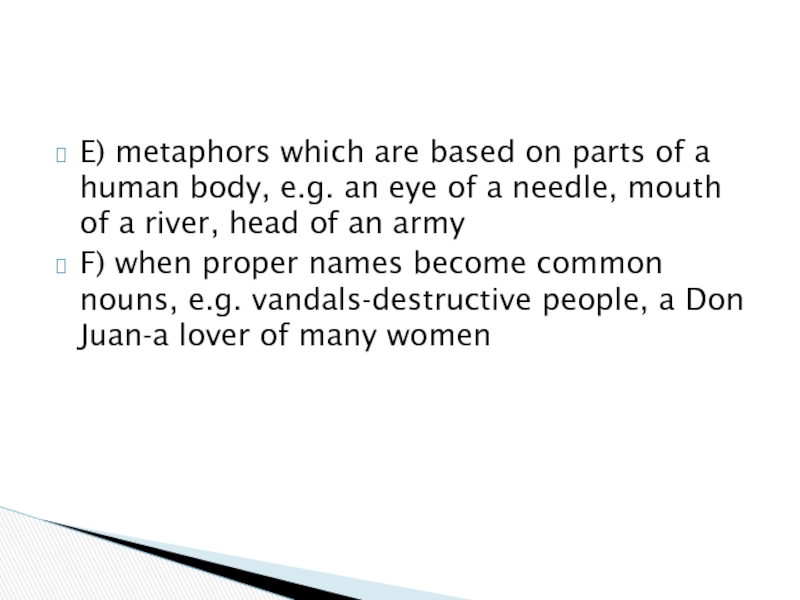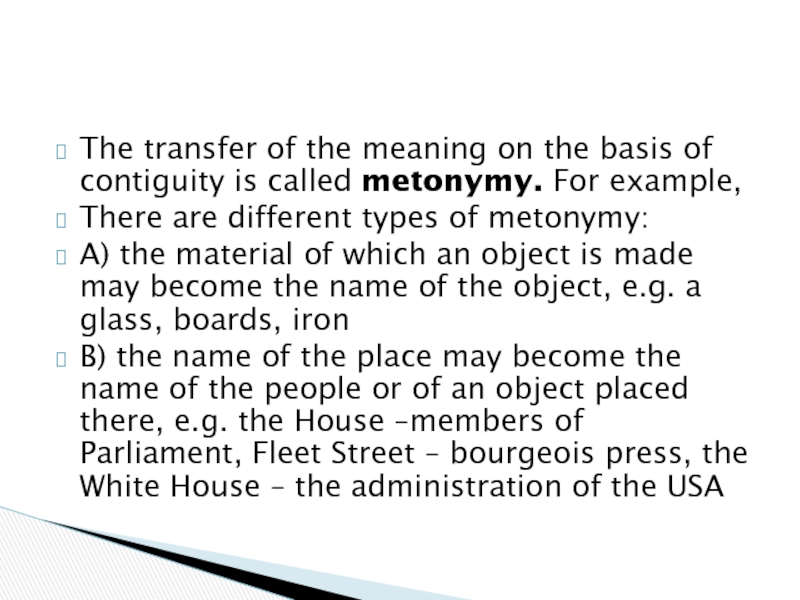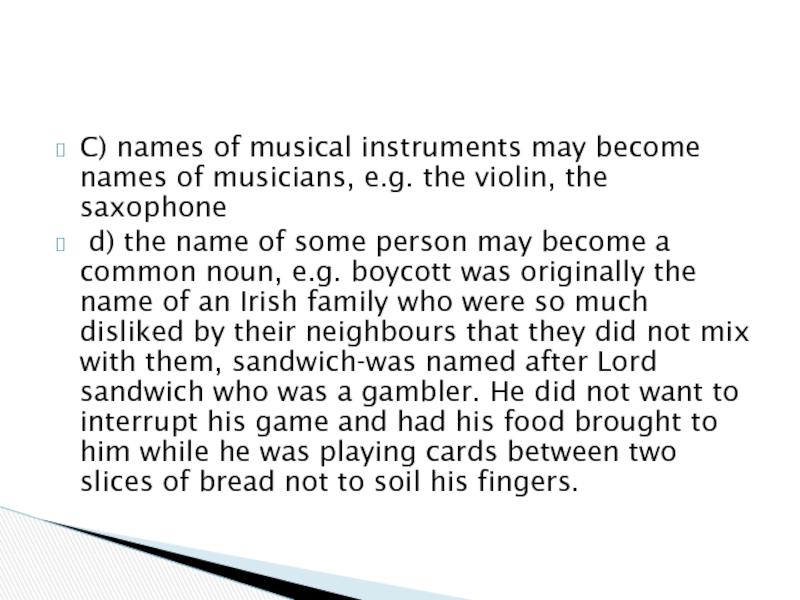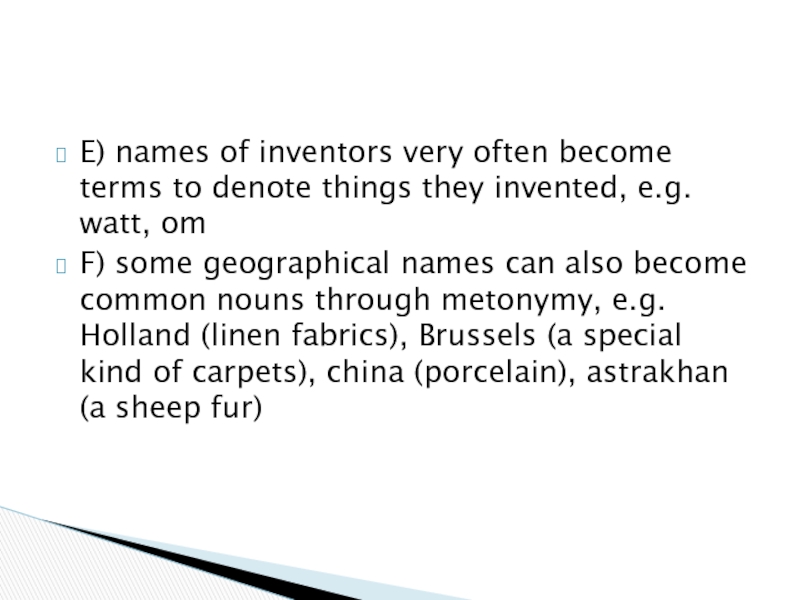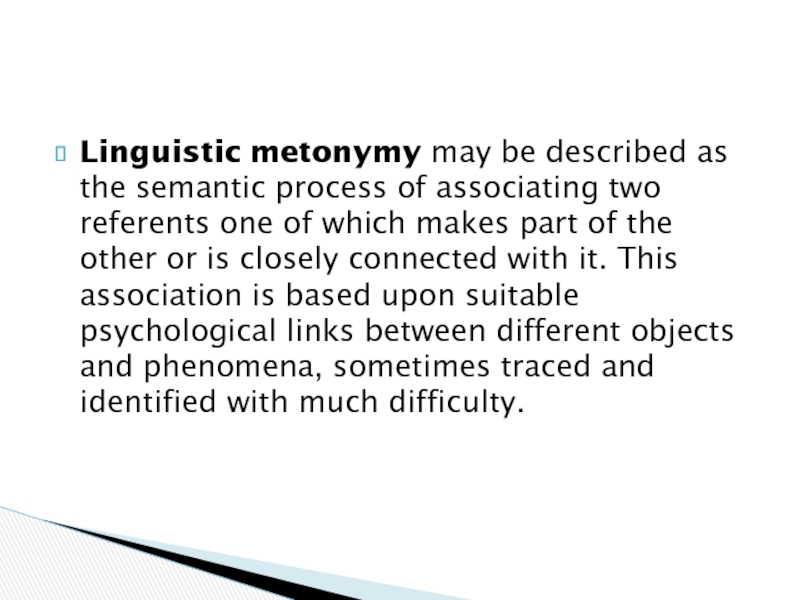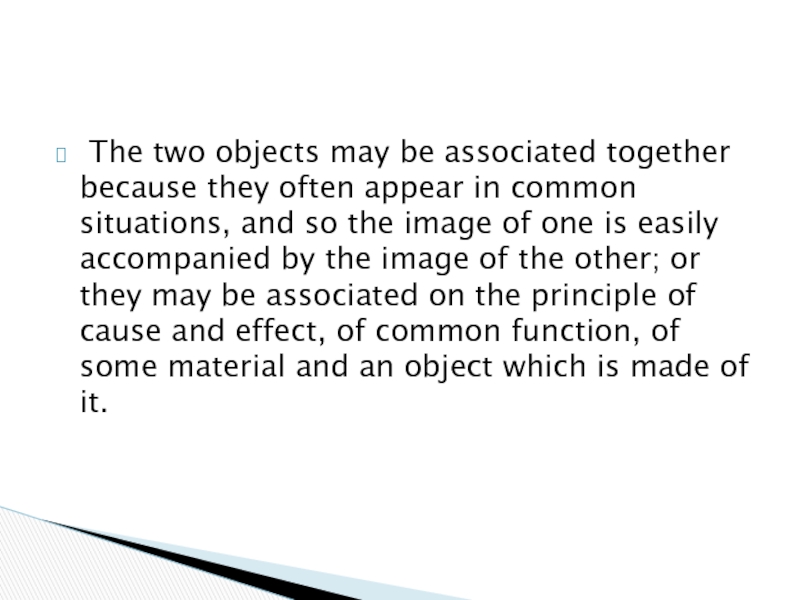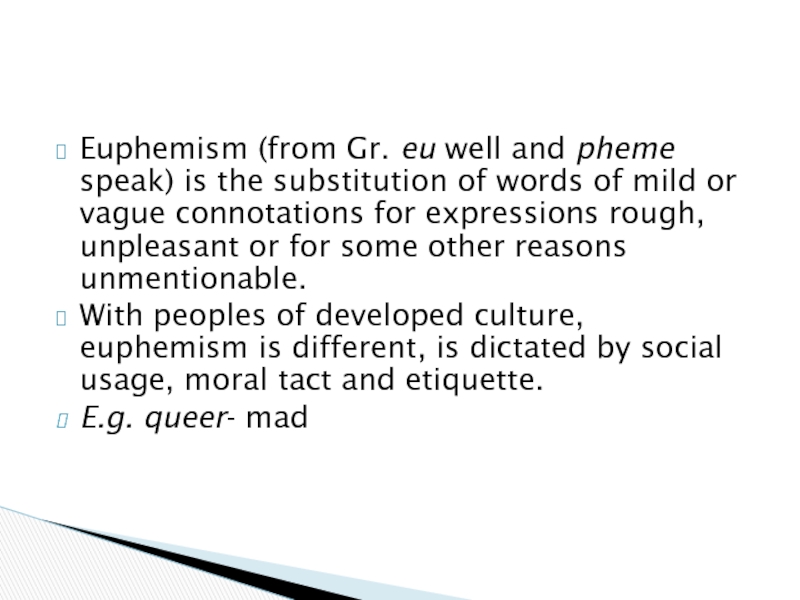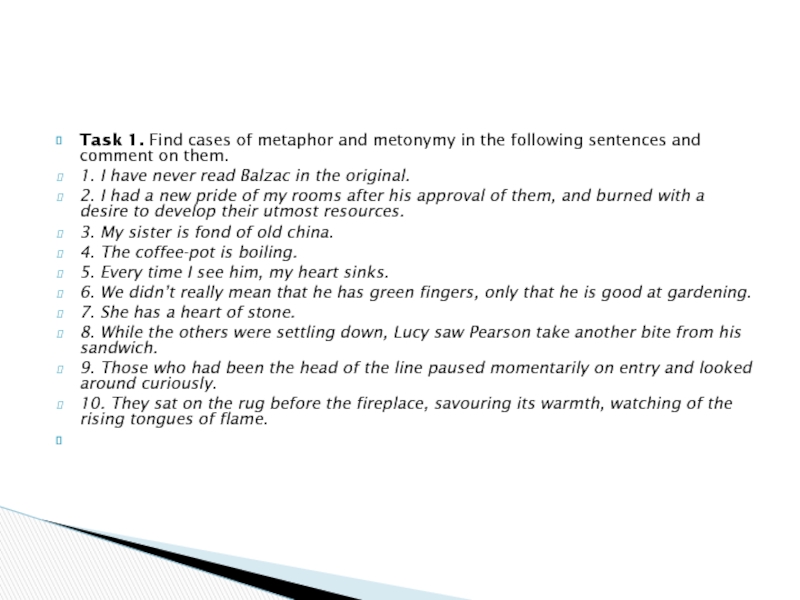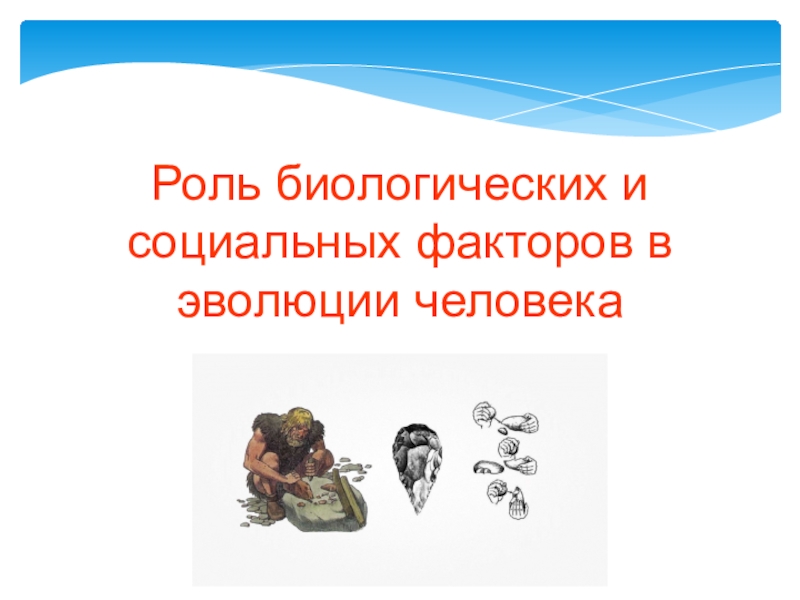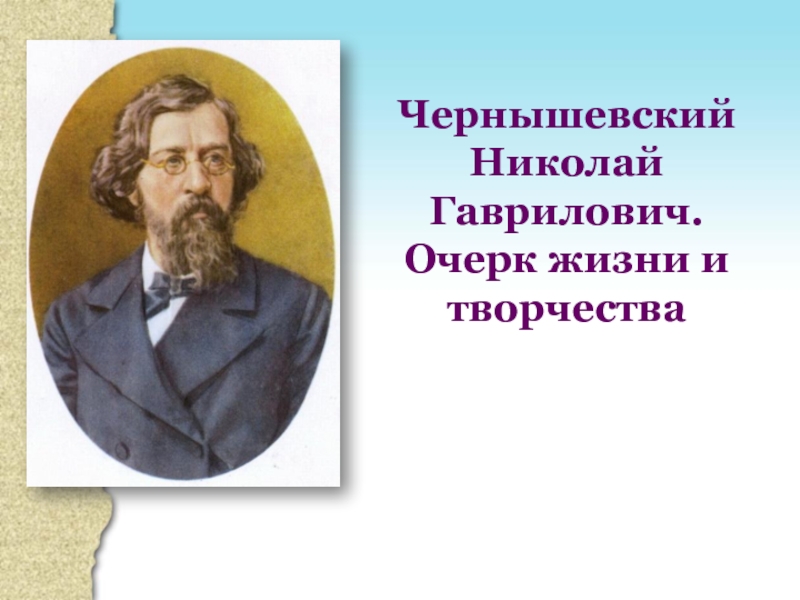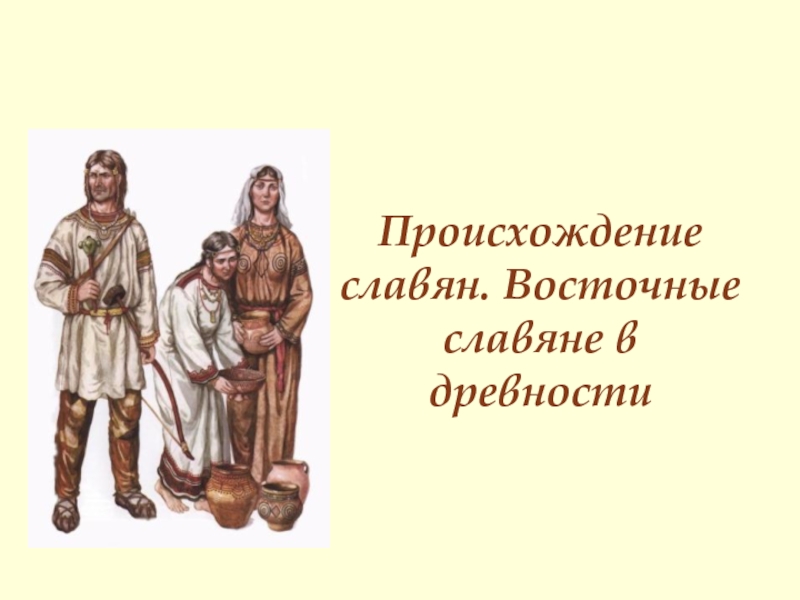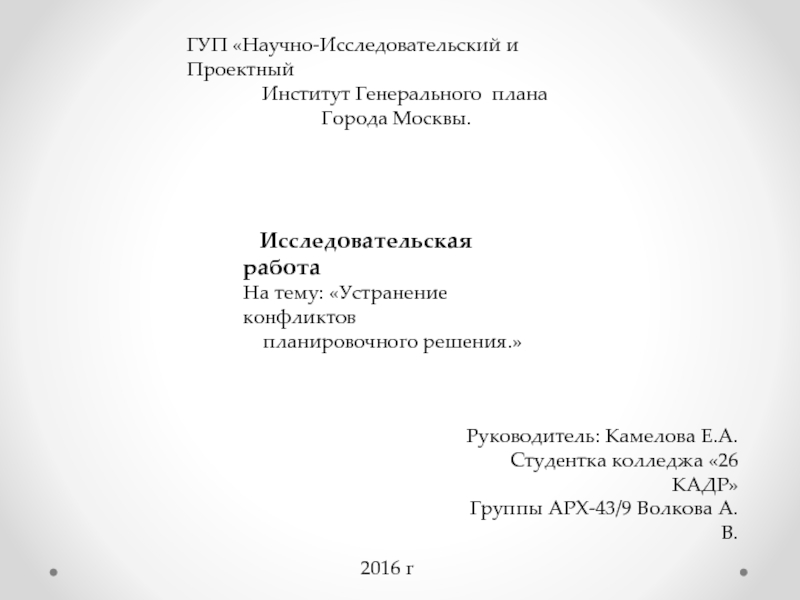Разделы презентаций
- Разное
- Английский язык
- Астрономия
- Алгебра
- Биология
- География
- Геометрия
- Детские презентации
- Информатика
- История
- Литература
- Математика
- Медицина
- Менеджмент
- Музыка
- МХК
- Немецкий язык
- ОБЖ
- Обществознание
- Окружающий мир
- Педагогика
- Русский язык
- Технология
- Физика
- Философия
- Химия
- Шаблоны, картинки для презентаций
- Экология
- Экономика
- Юриспруденция
Change of meaning. Causes & results of semantic change: metaphor, metonymy,
Содержание
- 1. Change of meaning. Causes & results of semantic change: metaphor, metonymy,
- 2. The semantic change may be analysed according
- 3. By extra-linguistic causes (non-verbal) we mean various
- 4. F: when the first textile factories appeared
- 5. By linguistic causes we mean factors acting
- 6. Generally speaking, of any semantic change has
- 7. In other words transference based on
- 8. For example,A) similarity of shape, e.g. head
- 9. E) metaphors which are based on parts
- 10. The transfer of the meaning on the
- 11. C) names of musical instruments may become
- 12. E) names of inventors very often become
- 13. Linguistic metonymy may be described as the
- 14. The two objects may be associated
- 15. Euphemism (from Gr. eu well and pheme
- 16. Task 1. Find cases of metaphor and
- 17. Скачать презентанцию
The semantic change may be analysed according to the cause, nature and results. The factors accounting for semantic changes may be roughly subdivided into two groups: extra-linguistic, linguistic causes.
Слайды и текст этой презентации
Слайд 2The semantic change may be analysed according to the cause,
nature and results.
The factors accounting for semantic changes may
be roughly subdivided into two groups: extra-linguistic, linguistic causes.Слайд 3By extra-linguistic causes (non-verbal) we mean various changes in the
life of the speech community, changes in economic and social
structure, changes in ideas, scientific concepts, way of life, changes in culture, arts as reflected in word meanings.Слайд 4F: when the first textile factories appeared in England, the
old mill was applied to these early industrial enterprises. In
this way mill (a Latin borrowing of the first century) added a new meaning to its former meaning “a building in which corn is ground into flour”. The new meaning was “textile factory”.Слайд 5By linguistic causes we mean factors acting within the language
system or through the influence of other words, mostly of
synonyms. F: the word land in old English meant both “solid part of earth’s surface” and “the territory of a nation”.Слайд 6Generally speaking, of any semantic change has some associations between
the old meaning and the new. There are two kinds
of association involved in various semantic changes: similarity of meaning (metaphor) and contiguity of meaning (metonymy).Слайд 7 In other words transference based on Resemblance is metaphor.
Transference based on contiguity is metonymy. The process of development
of a new meaning or a change of meaning is traditionally termed transference. The transfer of the meaning on the basis of comparison or resemblance is called metaphor.Слайд 8For example,
A) similarity of shape, e.g. head of a cabbage,
bottleneck, teeth of a comb
B) similarity of position, e.g. foot
of a mountain, a page, leg of a tableC) similarity of function, behaviour, e.g. branch of a science
D) similarity of colour, e.g. orange, chestnut
Слайд 9E) metaphors which are based on parts of a human
body, e.g. an eye of a needle, mouth of a
river, head of an armyF) when proper names become common nouns, e.g. vandals-destructive people, a Don Juan-a lover of many women
Слайд 10The transfer of the meaning on the basis of contiguity
is called metonymy. For example,
There are different types of metonymy:
A)
the material of which an object is made may become the name of the object, e.g. a glass, boards, ironB) the name of the place may become the name of the people or of an object placed there, e.g. the House –members of Parliament, Fleet Street – bourgeois press, the White House – the administration of the USA
Слайд 11C) names of musical instruments may become names of musicians,
e.g. the violin, the saxophone
d) the name of some
person may become a common noun, e.g. boycott was originally the name of an Irish family who were so much disliked by their neighbours that they did not mix with them, sandwich-was named after Lord sandwich who was a gambler. He did not want to interrupt his game and had his food brought to him while he was playing cards between two slices of bread not to soil his fingers.Слайд 12E) names of inventors very often become terms to denote
things they invented, e.g. watt, om
F) some geographical names can
also become common nouns through metonymy, e.g. Holland (linen fabrics), Brussels (a special kind of carpets), china (porcelain), astrakhan (a sheep fur)Слайд 13Linguistic metonymy may be described as the semantic process of
associating two referents one of which makes part of the
other or is closely connected with it. This association is based upon suitable psychological links between different objects and phenomena, sometimes traced and identified with much difficulty.Слайд 14 The two objects may be associated together because they
often appear in common situations, and so the image of
one is easily accompanied by the image of the other; or they may be associated on the principle of cause and effect, of common function, of some material and an object which is made of it.Слайд 15Euphemism (from Gr. eu well and pheme speak) is the
substitution of words of mild or vague connotations for expressions
rough, unpleasant or for some other reasons unmentionable.With peoples of developed culture, euphemism is different, is dictated by social usage, moral tact and etiquette.
E.g. queer- mad
Слайд 16Task 1. Find cases of metaphor and metonymy in the
following sentences and comment on them.
1. I have never read
Balzac in the original. 2. I had a new pride of my rooms after his approval of them, and burned with a desire to develop their utmost resources.
3. My sister is fond of old china.
4. The coffee-pot is boiling.
5. Every time I see him, my heart sinks.
6. We didn’t really mean that he has green fingers, only that he is good at gardening.
7. She has a heart of stone.
8. While the others were settling down, Lucy saw Pearson take another bite from his sandwich.
9. Those who had been the head of the line paused momentarily on entry and looked around curiously.
10. They sat on the rug before the fireplace, savouring its warmth, watching of the rising tongues of flame.

